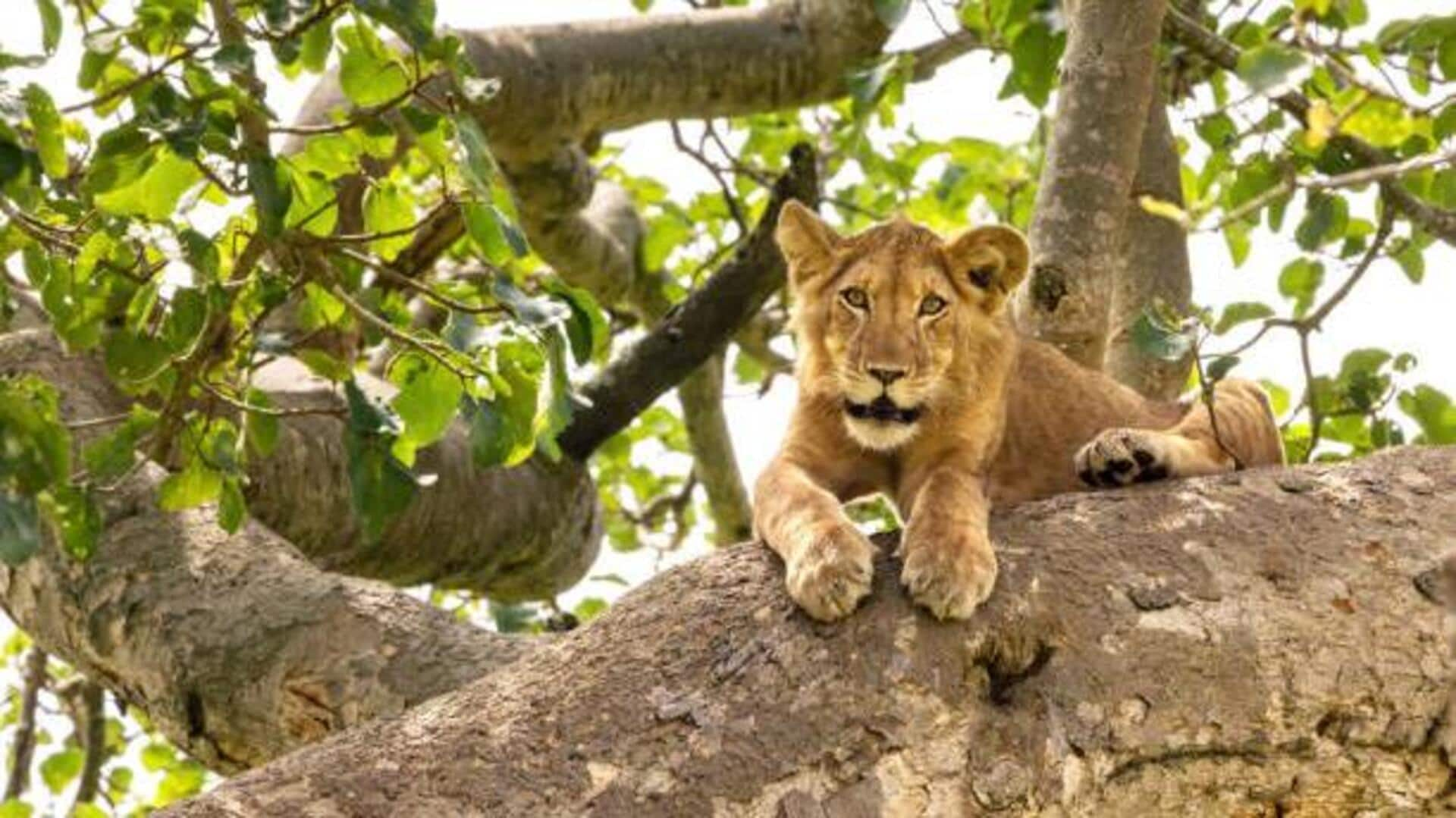
Ever witnessed tree-climbing lions? Experience them in Uganda
What's the story
Uganda's Ishasha sector in Queen Elizabeth National Park holds a secret: tree-climbing lions.
These lions, unusual for their tree-dwelling habits, seek refuge from the heat and insects and keep a watchful eye for their next meal from the high branches.
This article provides a glimpse into their world and how you can witness this phenomenon.
Habitat
The habitat and behavior
The vast fig trees and plentiful prey in the Ishasha sector of Queen Elizabeth National Park provide the perfect environment for one of the world's most unique populations of tree climbing lions.
Why do these lions climb trees? They do it to escape the heat, avoid annoying insects, and get a better view for spotting prey or threats.
Safari planning
Planning your safari adventure
If you want to see Uganda's tree climbing lions, schedule your safari during the dry seasons: January to February and June to September.
These periods offer better visibility, and lions frequently seek refuge in trees.
Choose early morning or late afternoon drives for the best chance to see them in action.
A good guide is invaluable, as they know the best spots and times to find these elusive lions.
Conservation
Understanding conservation efforts
Conservation is key to saving Uganda's tree climbing lions from habitat loss and human-wildlife conflict.
Organizations like the Uganda Wildlife Authority fight for their survival by studying the lions, tracking their numbers, teaching people to live peacefully with them, and protecting them from poachers.
Tourists help too! By visiting the parks, they support these efforts with their fees. This way, future generations can also witness this amazing wildlife spectacle.
Viewing tips
Tips for responsible wildlife viewing
When viewing Uganda's tree climbing lions, keep a respectful distance to prevent causing them stress.
Use binoculars or camera zooms for close-up views.
Always follow your guide's instructions, as they are trained to facilitate safe interactions between humans and wildlife.
Feeding or attempting to attract attention from any wild animal is strictly forbidden, as it interferes with their natural behaviors and diet.
Finally, minimize noise to avoid disrupting their activities.